Deep in the forests of northwestern Pennsylvania lies a little-known, but incredibly important part of our Country’s early history and our Native American past. Although now mostly covered by the waters of the Allegheny Reservoir (a body of water created when the Army Corps of Engineers dammed the Allegheny River with the Kinzua Dam in 1965), this land, the Cornplanter Grant, has a very important story to tell.

Current view of the southern end of the Cornplanter Grant today. Image courtesy of Chris Espenshade, taken February 28, 2017.
To understand this story, however, we have to go back to when the United States was a young nation, just after the Revolutionary War. We also need to go west to what was, at the time, “The Ohio Country,” the land west of the Appalachian Mountains and north of the Ohio River, roughly corresponding to the modern state of Ohio, and parts of the modern states of Indiana, Pennsylvania, and West Virginia. With the 1783 Treaty of Paris ending the Revolutionary War, this land was ceded to the new United States of America by the British Empire, and settlers from the new nation rushed in to claim the land. As we know, of course, the land wasn’t really theirs to claim; it was inhabited by Native Americans who had lived there for many generations. Of course, these Native Americans did not take this invasion lightly and fought back leading to the “Ohio Indian Wars” of the 1780s and 1790s.

Chief Cornplanter, portrait by Frederick Bartoli, 1796.
Back east, in northern Pennsylvania and southern New York, the Seneca Nation, led by Cornplanter, allied with the young United States and Cornplanter worked to bring the Native Americans of the Ohio Country to the negotiating table. For a young nation with a small army this help was crucial; a wider war with even more Native American nations could have easily led to disaster for the young nation. To reward Cornplanter for his support, the Pennsylvania and federal governments “gifted”—the term gift is somewhat misleading since the land being “given” to the Seneca was occupied by them—Cornplanter and his heirs—not the entire Seneca Nation—three tracts of land: 600 acres in Forest County, 300 acres in Venango County (near Oil City), and over 700 acres in Warren County.
The first two tracts passed out of Cornplanter’s hands fairly quickly, but he retained and lived on the third tract in Warren County, a piece of land that became known as the Cornplanter Grant. The heirs of Cornplanter would continue to own the land until 1965 when it was taken by the US Army Corps of Engineers to create the Allegheny Reservoir.
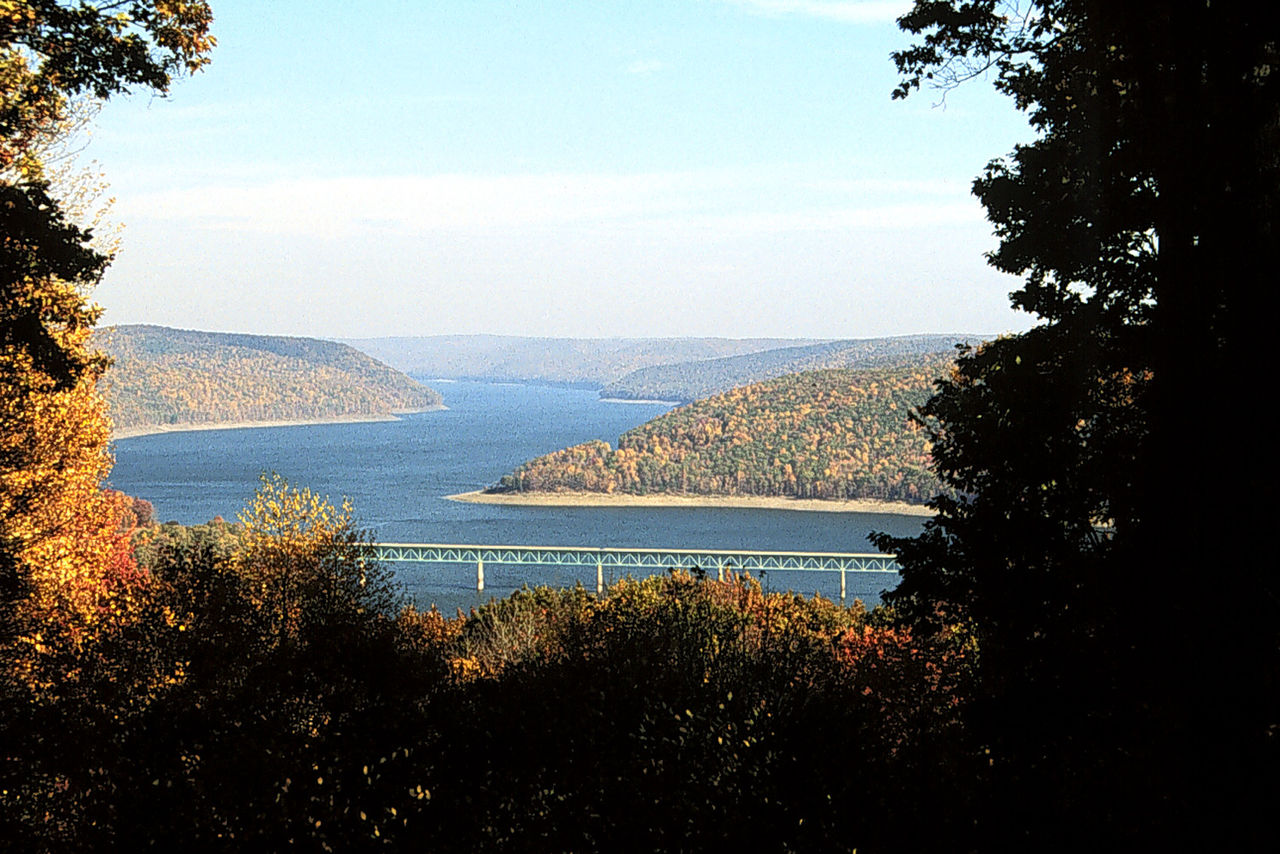
Allegheny Reservoir behind Kinzua Dam on the Allegheny River in Warren County. PA State Route 59 crosses the reservoir on a bridge.
Interestingly, the heirs of Cornplanter only surrendered the portion of the Grant under the normal pool elevation of the reservoir; although the county hoped to develop the portion of the Grant above the normal pool elevation of the reservoir for recreation, the heirs of Cornplanter were able to retain ownership of that portion and continue to do so to this day.
Before it was inundated, the Grant played a significant role in Seneca culture and identity. It was the place where Cornplanter lived. Cornplanter was a key player in navigating the Seneca Nation through the tumult of the Revolutionary War and the creation of the new United States of America. It was also the home of Handsome Lake, Cornplanter’s half-brother and a key Seneca prophet.
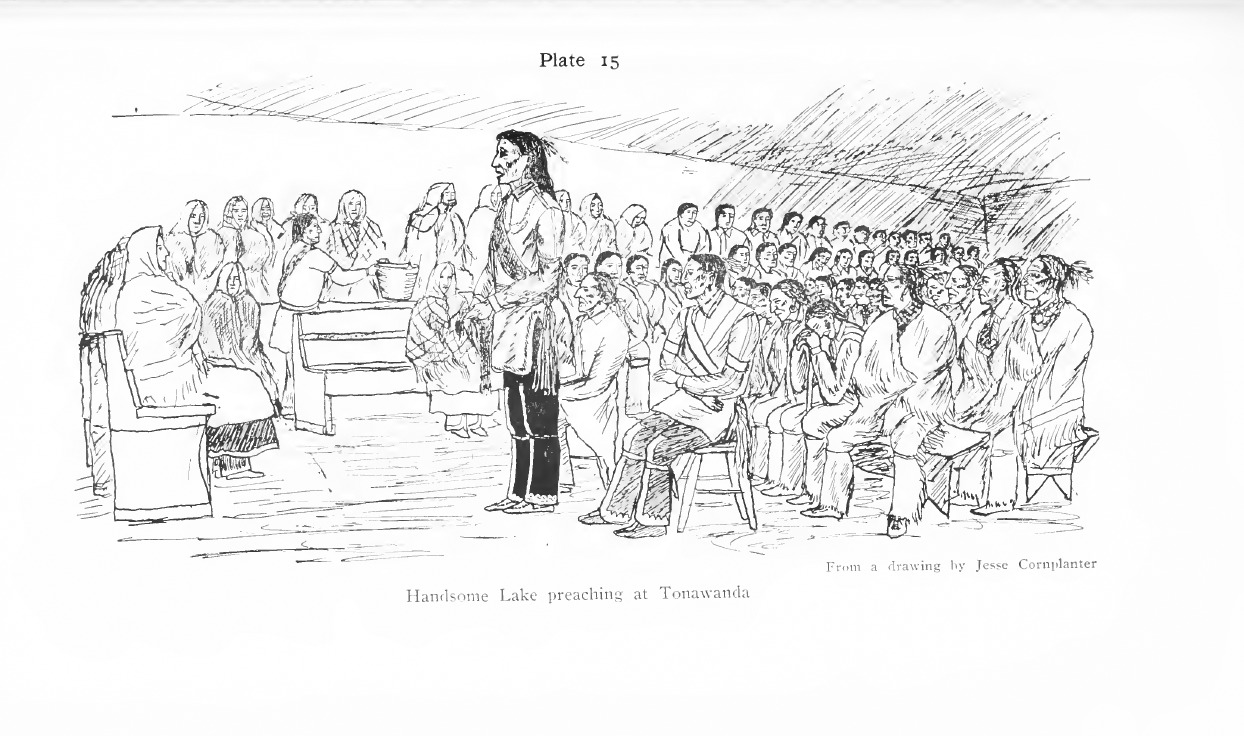
“Handsome Lake Preaching at Tonawanda” by Jesse Cornplanter from “The code of Handsome Lake, the Seneca prophet” by Arthur C. Parker. Full book available at https://archive.org/details/codeofhandsomela02hand.
While residing on the Grant, Handsome Lake had several visions that led him to create the Code of Handsome Lake, the basis for the Longhouse religion, a religion that sought to address the issues wrought by contact with Euro-Americans and to reinvigorate Seneca spirituality. Because of its isolated location, the Grant was also the location where many traditional Seneca lifeways persisted well into the 20th century.
On the Grant the heirs of Cornplanter would collect wild plants for use as medicine ; undertake traditional crafts, such as making baskets and longbows; hunt, trap, and fish; participate in the Snow-Snake competition; and so forth. Snow Snake was a game where participants would launch their Snow Snake (a long straight spear that was waxed to reduce friction) down a packed snow track. The winner was the participant whose Snow Snake traveled the farthest.
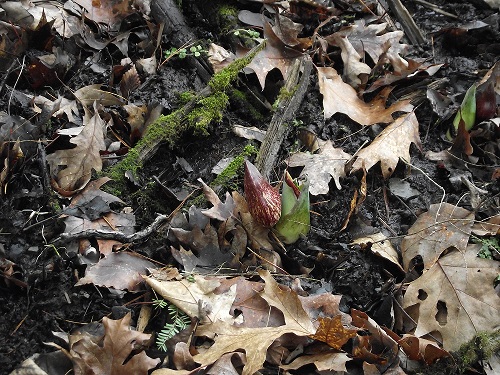
Skunk cabbage shoots in springhead seep. Skunk cabbage was used as both food and medicine by the Seneca. Photo courtesy of Chris Espenshade, taken February 28, 2017.
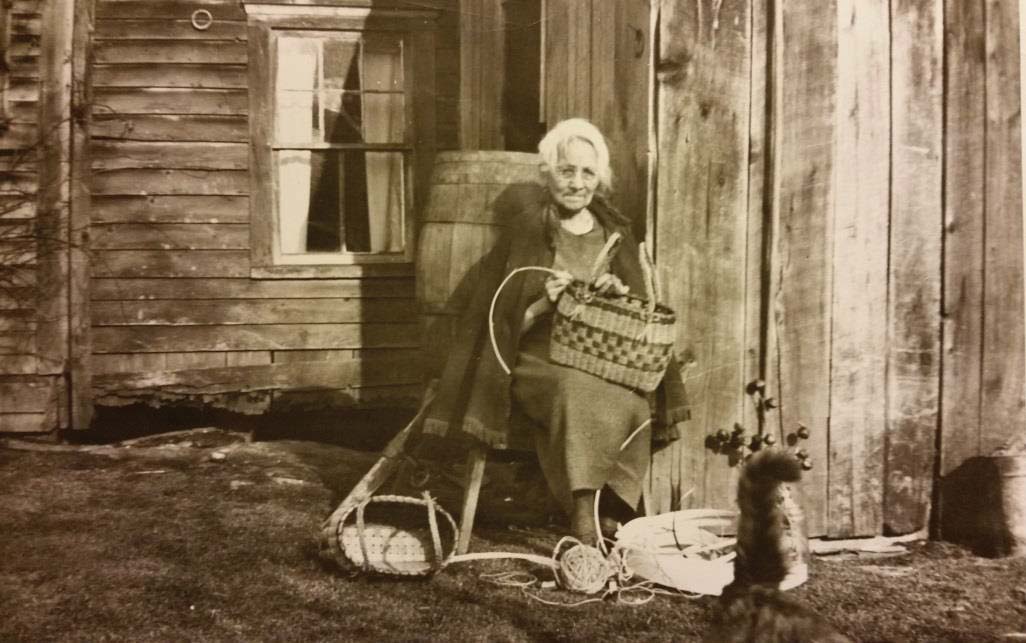
Phoebe Gordon making baskets at the Cornplanter Grant. Ms. Gordon is constructing a two-handled, split-oak basket. Photo courtesy of the Deardorff Archive, Warren County Historical Society.
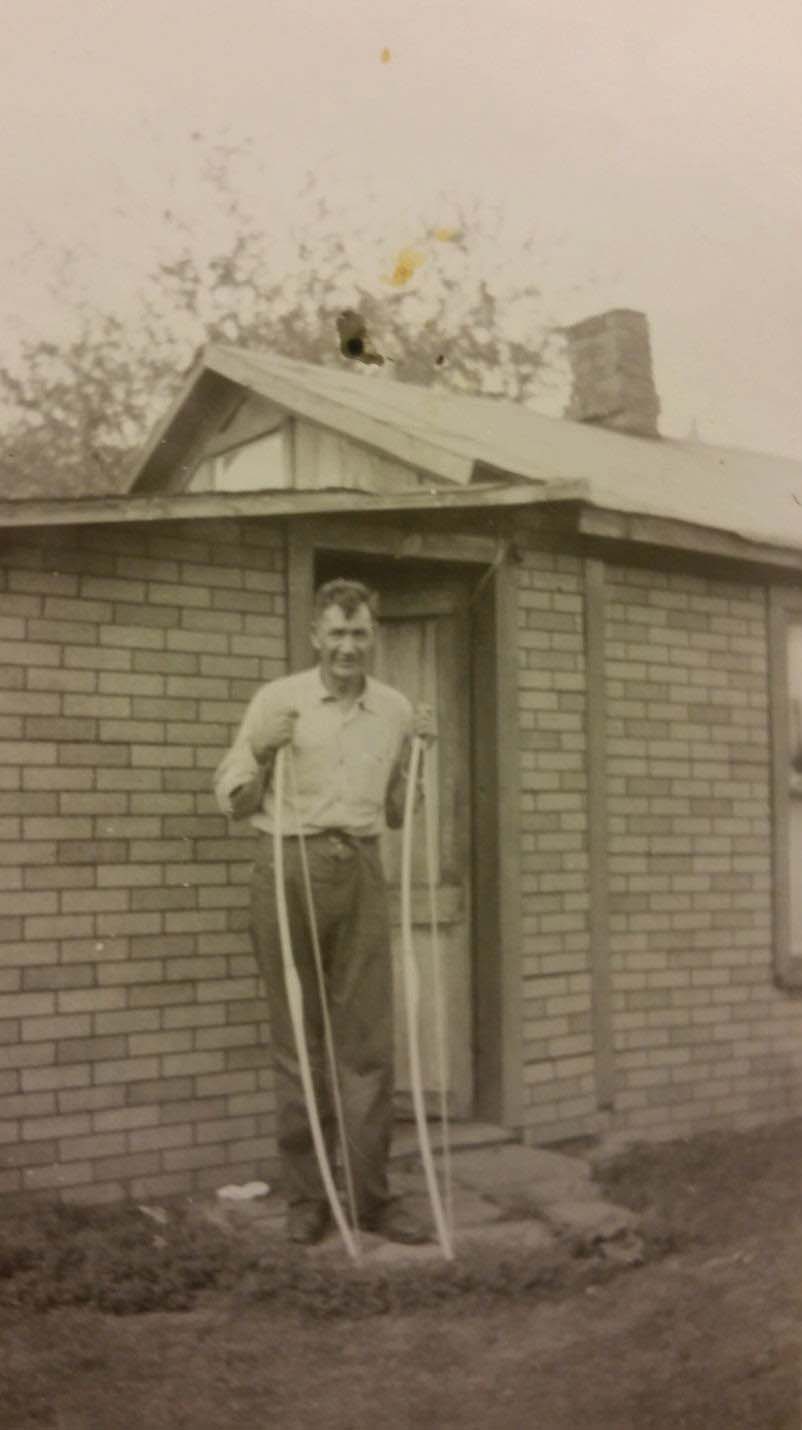
Sherman Redeye with hand-made bows on the Cornplanter Grant, 1948. Image courtesy of the Deardorff Archive, Warren County Historical Society.
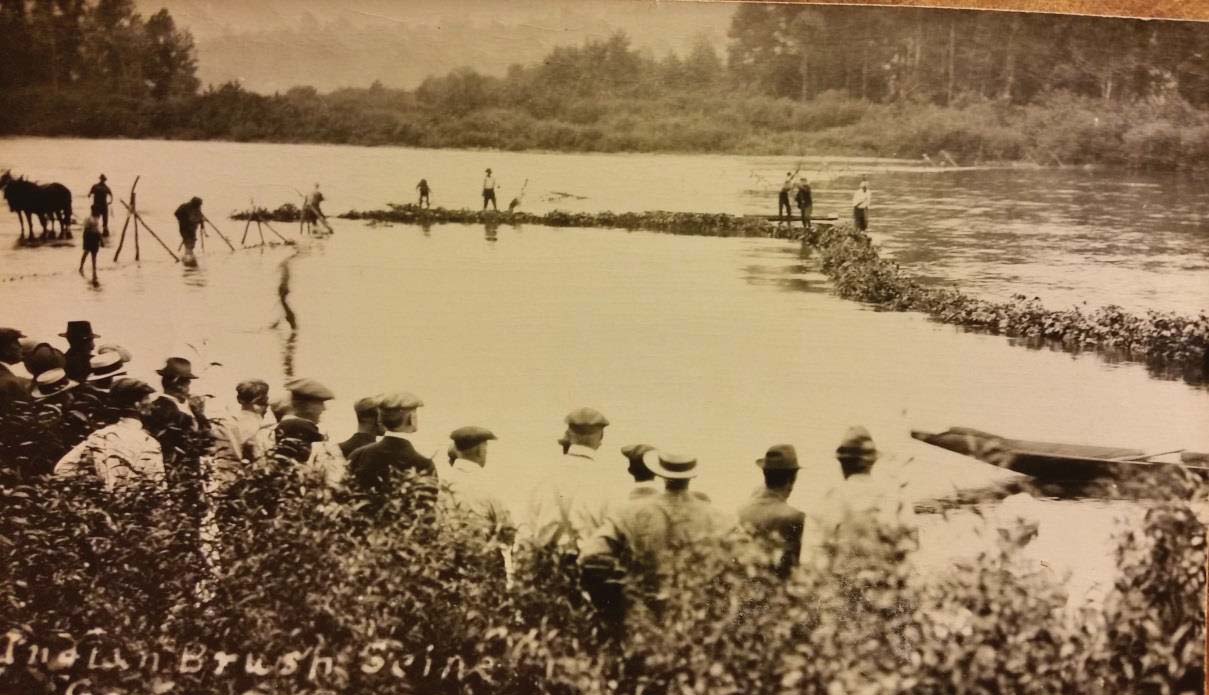
Using a brush seine for fishing on the Cornplanter Grant. The brush seine was used to drive the fish so they could be caught by others. Image courtesy of the Deardorff Archive, Warren County Historical Society.

Ezra Jacobs at the Cornplanter Grant with his snow snake. Image courtesy of the Deardorff Archive, Warren County Historical Society.
In addition to these activities, the proposal to inundate the Grant (and the eventual inundation of the Grant) was a pivotal moment in modern Seneca history, with the Seneca (and those sympathetic to their cause) exercising their political power to resist the building of the dam. The result was unsuccessful, but the heirs of Cornplanter did retain ownership of a portion of the Grant, as noted above.
Recently, the Pennsylvania State Historic Preservation Office, with funding from the Cultural Resource Fund, and the assistance of the Seneca Nation of Indians Tribal Historic Preservation Office, the US Army Corps of Engineers, the Allegheny National Forest, and Skelly and Loy prepared a National Register nomination for the Cornplanter Grant as a Traditional Cultural Property .
The last generation that spent time on the Grant before inundation is now in their 60s and 70s, so this project has documented the property and its significance for future generations, for the children, grandchildren, and great-grandchildren of the last generation to know the Grant as it was before inundation.
If you would like to learn more about the Cornplanter Grant, check out the Seneca-Iroquois National Museum in Salamanca, New York.
This week’s post is by guest contributor Keith Heinrich. Keith currently works for Skelly and Loy as an architectural historian with their Cultural Resources Services Group. For the past 12 years, he has reviewed nominations for the National Register of Historic Places as a member of the Pennsylvania State Historic Preservation Office (PA SHPO). Mr. Heinrich holds a Bachelor of Arts degree in Western History and Archaeology from Lycoming College, and a Master of Arts in Anthropology/Archaeology from East Carolina University. He is a member of the Register of Professional Archaeologists and Society for Historical Archaeology.
Lake Perfidy
Reminds me of the Blasket Islands, thugh the context and detail are very different.
Just thinking this morning about the elderly Seneca lady who used to sell her handmade baskets at the end of the old Bone run road[?] on Sunday afternoons.
Wished now we had stopped and bought some.That was about 55 years ago.
What a wonderful piece! Thanks for it.
Great article, thank you so much. My father used to buy a suave made by the Seneca Reservation which actually saved my mother’s life back in the 50’s. Smelled terrible , but really worked. Wondered if this medicine was still available today?
Been living on the edge of it most of my life, and my uncle lived there (by the dam) and ran a oil lease in the aera. I new a little about it but not much. It’s ashame we lose so much history.
I lived in Kinzua as a child. Very beautiful place. I remember the dam coming and all of us having to move.
I visited Kinzua as a child. We would visit the Indians. They had things you could buy. I loved seeing them. Then when they put the dam in I wondered where they went. So sad.
I’m a Gonnie. Looking where we come from? Besides United States.
I just spent a couple hours with my 90-year-old uncle Donald Pleasant who informed me that his grandfather John Andrew Anderson was part cornplanter Indian and he told us a story that is exactly like the one I just read it will be fascinating to find my other part of the family. He talked with us about what he was driving trucks when he would stop in cornplanter before it was turned into a damn. I don’t know how to trace my family back that far but I’m sure going to give it a try.
The dams in NW Pennsylvania, created to “save” the downwater towns from flooding are without doubt the reason for the seasons. Seasons of ice, wind, clouds, famine, and injustice to natives and settlers alike. Eternal rustbelt microclimate.
ive been trying to find my familey my gmother was full native thats all i no her name was mary ella watkins ross lived up in renovo passedin early 60s dad was edward alvin mcgregor i no i have more familey but dont remember them to young when put in foster care someone please help if you can thanks jackie mcgregor cornelis
try the clerks office at the seneca nation 716-945-1790
good luck
It was not until my husband’s cousin did a genealogy chart did we learn that his side of the family was related to Cornplanter. Cornplanter’s father’s Dutch European surname, Abeel, was changed over the years from Abeel to Abail to Obail, to O’Bail, back to Obail…and finally dropping the O to become just plain Bail. Most interesting.